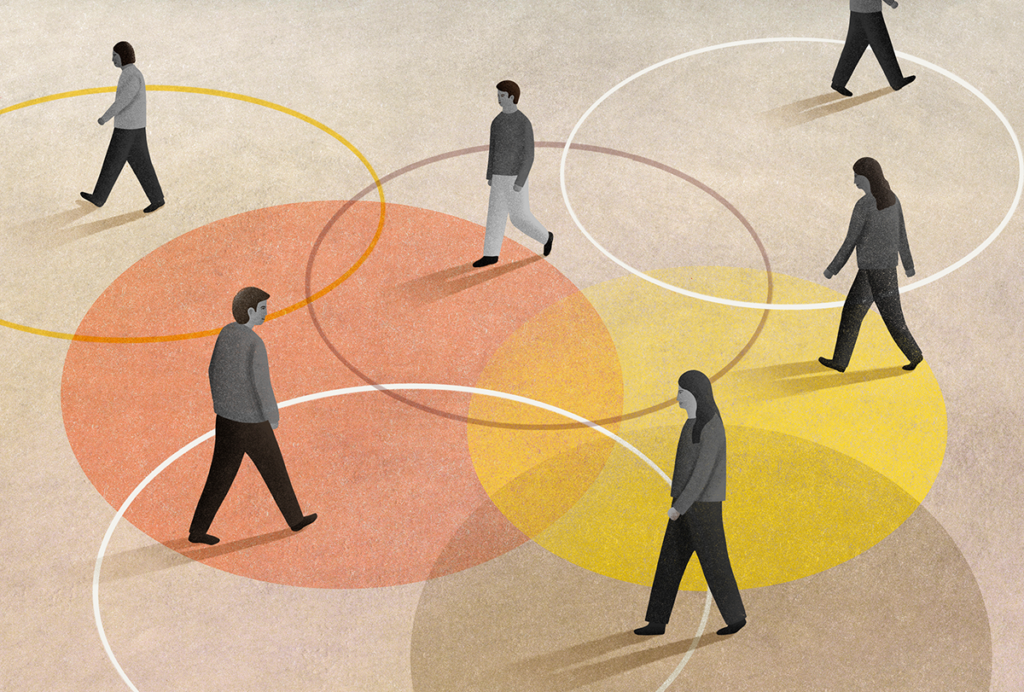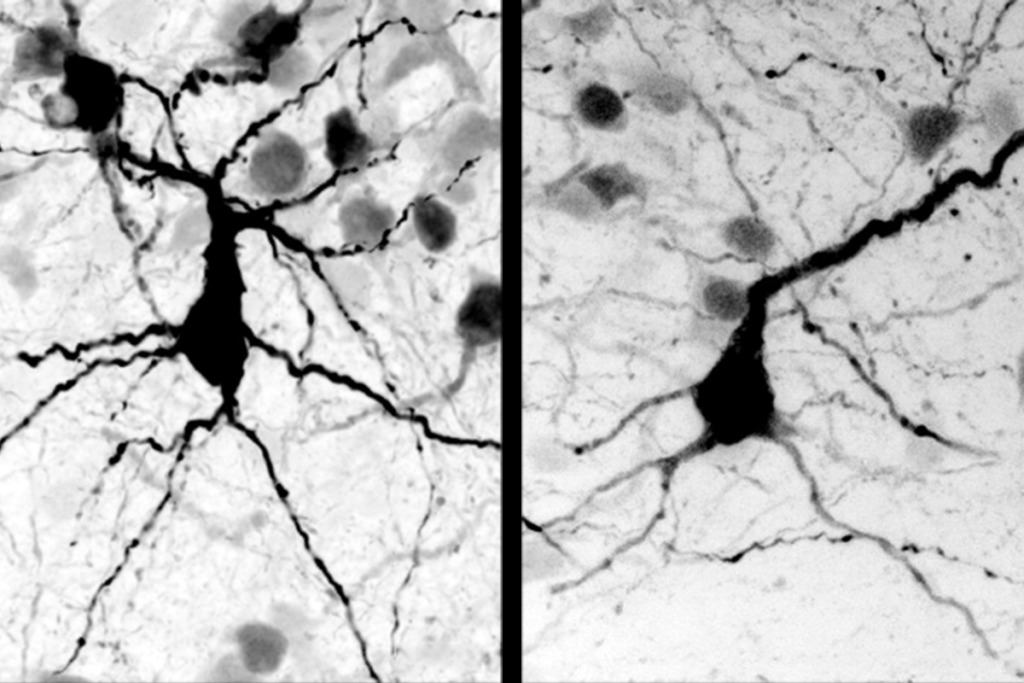Double-dose mutation in language gene points to new syndrome
Researchers have defined a new syndrome that results from carrying two mutated copies of CNTNAP2, a gene linked to autism.
Editor’s Note
The findings from the conference report below were published 3 February 2016 in BMC Medical Genetics1.
Drawing on characterizations of three newly identified individuals as well as reports of nearly two dozen others, researchers have defined a new syndrome that results from having two mutated copies of the autism-linked gene CNTNAP2.
The unpublished results, presented yesterday at the 2015 Society for Neuroscience annual meeting in Chicago, represent a ‘genetics-first’ approach to studying the gene. This method involves identifying a set of individuals who share changes in the same gene and characterizing their features, rather than the more typical approach of grouping individuals by their outward features and then looking for a genetic explanation.
CNTNAP2 has been linked to schizophrenia, epilepsy, intellectual disability and language impairments. This long list of conditions has made it difficult to get a handle on the gene’s molecular function.
“One way to do this is by looking at patients,” says Pedro Rodenas Cuadrado, a postdoctoral researcher in Sonja Vernes’ lab at the Max Planck Institute for Psycholinguistics in the Netherlands, who presented the work.
In this case, the researchers were not interested in people who have heterozygous mutations — that is, mutations in a single copy — of CNTNAP2. These individuals have extremely variable characteristics, and many are unaffected. “The literature is still unsure about the role of heterozygous mutations,” Cuadrado says.
Those who have mutations in both copies of the gene almost always have severe developmental problems. Cuadrado and his colleagues identified two of these individuals — a pair of sisters who have severe intellectual disability, epilepsy and symptoms of autism. The women also have facial features seen in other people with two copies of the mutation: bushy eyebrows, thick lips, a broad nose and droopy eyelids.
New syndrome:
A third individual, a boy about 2 years old, also has this constellation of facial features. He has mild intellectual disability, repetitive movements and breathing difficulties. So far, he does not show signs of autism, but Cuadrado says the boy is too young to rule out a diagnosis of the disorder.
One section of CNTNAP2 is duplicated in the copy of the gene the boy inherited from his mother. But his mother does not have any developmental problems, so the researchers suspected he might also have an abnormality in his other copy of the gene. They found a change in a single DNA base pair in the paternal copy of CNTNAP2.
The researchers also assembled information from published reports on 23 individuals who have two mutated copies of the gene. Together, the cases they examined enabled them to home in on the key features of a syndrome they call “CASPR2 deficiency disorder,” named after the protein encoded by CNTNAP2. The syndrome’s characteristics include seizures that begin early in life, intellectual disability, language impairments and features of autism.
Some of the individuals also have other symptoms such as movement and breathing problems. The researchers are trying to determine how the varied constellations of symptoms map to the specific CNTNAP2 mutations these individuals carry.
The team’s strategy for isolating the effects of different mutations in the gene is extremely interesting, says Roslyn Holly Fitch, professor of behavioral neuroscience at the University of Connecticut in Storrs. Fitch was not involved with the research but works with a mouse strain lacking CNTNAP2. “The CNTNAP2 gene seems to keep coming up” in autism, she says. “It’s a core player in whatever’s going on in the brain.”
Puzzle piece:
According to other unpublished data presented yesterday at the conference, CNTNAP2 appears to help maintain healthy dendrites, the neuronal projections that receive signals from other cells. The gene has this effect only in cells that dampen neuronal signals in the brain, which could help explain why people with CNTNAP2 mutations are prone to seizures, says Ruoqi Gao, a graduate student in Peter Penzes’ lab at Northwestern University in Evanston, Illinois, who presented the work.
Gao’s work is in cultured rat and mouse neurons, but a thorough examination of how mutations in CNTNAP2 affect people could help clarify the gene’s function, he says.
Gao notes that Cuadrado’s team does not yet know what the mutations identified in CNTNAP2 mean for the structure and function of the resulting protein. “It’s pretty speculative,” he says.
Cuadrado says his team is looking to characterize people who have two mutated copies of the gene in order to fully characterize the effects of the mutations. Studying such individuals could help the researchers tie specific mutations to distinct forms of the CASPR2 protein and to clarify the gene’s link to autism.
Except for the 2-year-old boy, all of the individuals who have two mutated copies of the gene identified so far have features of autism. But not all have a diagnosis of autism, and the features identified may not be consistent, because they were not evaluated using the same assessments.
For more reports from the 2015 Society for Neuroscience annual meeting, please click here.
References:
- Rodenas-Cuadrado P. et al. BMC Med. Genet. 17, 8 (2016) PubMed
Recommended reading

New organoid atlas unveils four neurodevelopmental signatures
Explore more from The Transmitter

The Transmitter’s most-read neuroscience book excerpts of 2025

Neuroscience’s leaders, legacies and rising stars of 2025


